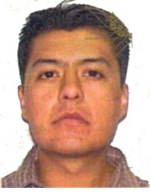
Stroke has been scarcely studied in Latin America (LA). The Mexican Institute of Neurology Stroke Registry was established in 1990 as a prospective computer-based database to register data obtained from patients admitted with stroke. Using this data, we attempted to define the profile of risk factors and outcomes. The demographic data, stroke description, ancillary tests, vascular risk factors, and modified Rankin scale (mRs) were registered. Ischemic stroke subtyping was based on the Trial of Org 10,172 of the Acute Stroke Treatment classification. We followed-up patients using multiple overlapping methods. Primary outcomes included mRs, recurrence, and death at 30 days and at the end of follow-up. We included 4,481 patients with a median follow-up of 27 months, (17,281 person-years follow-up). The mean age was 52.8 ± 18 years. There were 2,229 males (50%) included in the study. CI was present in 64.9%, intracerebral hemorrhage (ICH) in 25.6%, and cerebral venous thrombosis (CVT) in 6.3%. Hypertension was the major risk factor (46.5%). The most common cause of CI was atherosclerosis (27%). ICH was mainly hypertensive (58%), and 60% of CVT were puerperal. Overall, the mortality rate was 24.5%. The recurrence rate was 16.9%. Poor outcome (mRs ≥ 3) was found in 56.2% of patients. The best outcomes were observed in CVT patients (74.5% mRs ≤ 2), whereas 72.1% ICH patients had mRs ≥3. This is one of the largest hospital-based registries in LA and shows significant differences with other previously published registries, including a younger age, relatively less hypertension, and larger proportion of CVT. Poor functional outcome was common. This study adds to the understanding of geographic differences in stroke characteristics and outcomes.








